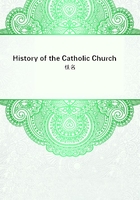
第243章
To prevent Queen Mary from falling into the hands of the Catholic lords of the north she was removed from Tutbury to Coventry (26th January 1569). Whatever might be said of Mary's conduct during her early years in Scotland, or whatever doubt might have been entertained about her orthodoxy by the Pope and by the Catholic powers of the Continent, everything unfavourable to her was forgotten by them in their sympathy for her sufferings, and in their admiration for her fortitude and sincere attachment to her religion. Pius V. and Philip II. were as deeply interested in her fate as were the Catholics of Scotland and of England. A scheme was arranged to promote her marriage to the Duke of Norfolk and to secure her succession to the English throne, but Elizabeth anticipated the design by imprisoning the Duke, suppressing the rebellion of the northern lords (1569), and by braving the terrors of the papal excommunication levelled against her the following year.
When later on a new plot was discovered with the same object in view Norfolk was put to death (1572). While Mary was alive in England she was a source of constant danger to Elizabeth's throne. English Catholics driven to desperation by the penal laws were certain to turn to her as their lawful sovereign, while the Catholic nations on the Continent could fall back on the imprisoned queen whenever they chose to stir up disorder, or possibly to attempt an invasion. Dangerous as she was in prison, she might be still more dangerous if she were free to effect her escape either to Scotland or to France. In her death lay Elizabeth's best hope of peace, and as the rigour of her confinement failed to kill her, an attempt was made to induce the Scots to undertake a work that the English feared to undertake.[34] At last an opportunity was given of bringing about her execution and of covering the measure with an appearance of legality. A scheme for her release was undertaken by Babington,[35] with every detail of which the spies of Cecil were intimately acquainted, if they did not actually help to arrange them. Babington's letters to Mary and her replies were betrayed and copied. It is certain that Mary knew what was intended, but there is no evidence to show that she approved of the murder of Elizabeth. When the proper time came Babington and his accomplices were arrested and put to death (October 1586), and Mary's fate was submitted to the decision of Parliament. Both houses petitioned that the Queen of Scotland should be executed, but Elizabeth, fearful of the consequences and hoping that Mary's jailer Paulet, would relieve her of the responsibility, hesitated to sign the death warrant. At last, however, she overcame her scruples, and on the 8th February 1587, Mary Queen of Scots was beheaded at Fotheringay. Her attitude to the last was worthy of praise. She died a martyr for her religion, and by her death she expiated fully the imprudences and waverings of her youth. Elizabeth pretended to be horrified by the action of her ministers. Her secretary was imprisoned and fined to prove to Scotland, France, and Spain that the Queen of England had no responsibility for the tragedy of Fotheringay.
Meanwhile how fared it with Catholicism in Scotland? The Regent Moray returned from England early in 1569. Acting on the repeated requests of the General Assembly he undertook new measures against the Catholic Church. Catholic officials and professors were removed from Aberdeen University; several priests were arrested and punished though the regent was unwilling to inflict the death penalty, and many distinguished clerics and laymen, including the Primate and Bishop Leslie, were outlawed and their goods confiscated. The regent was not destined however to enjoy long the fruits of his treachery against his sister. In 1570, at the very time when he was plotting with the English government to get the Queen of Scotland into his power, he was shot in Linlithgow by one of the Hamiltons, the hereditary enemies of his house.
On his death there were two strong parties in Scotland. The majority of the nobles, including the Duke of Chatelherault, Argyll, Huntly, Atholl, and even Kirkcaldy and Maitland of Lethington, two former supporters of Moray, ranged themselves on the side of their imprisoned queen, and might have succeeded in re-establishing her authority had not Elizabeth espoused the cause of Morton, Mar, Glencairn and Ruthven, backed as these were by Knox and the preachers. Two English armies were dispatched into Scotland, and with the help of the English forces the Earl of Lennox, Darnley's father, was appointed regent (July 1570). It was not the first time that he had sought to destroy the independence of his country by invoking the assistance of the English, and as he had gone over to Protestantism he was determined to throw himself into the arms of the Reformers. The castle of Dunbarton was still in the possession of the queen's supporters. He laid siege to it, and captured it in April 1571. Here he seized the Primate of Scotland, and had him put to death after a summary trial. The chapter met and elected Robert Hay, but he was never consecrated, and for more than three hundred years St. Andrew's was without a Catholic bishop.
In September 1571 Lennox was slain, and the Earl of Mar was elected regent. During his short reign he was unable to enforce his authority in the country. Negotiations were opened with him by Cecil's agents to induce him to undertake the execution of the Queen of Scotland, who was to be sent back from England for the purpose, but his sudden death in 1572 put an end to the scheme.
He was succeeded by the Earl of Morton, another of Elizabeth's agents.